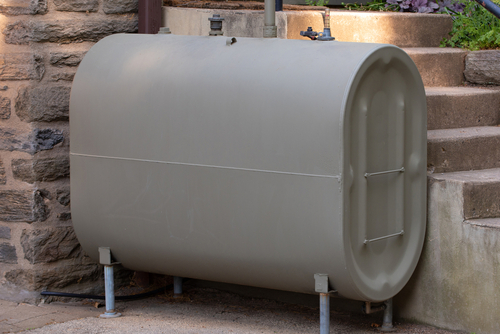How To Spot and Prevent Oil Tank Troubles
Written on: March 28, 2022
Keeping your oil tank in top shape
 If your heating oil tank is older and shows signs of wear and tear, it may be time to consider replacing it – especially as warmer weather arrives and the demand for heating equipment decreases. After all, modern heating oil tanks are made to last these days, but they don’t last forever. Read on to learn more about what to look for when assessing the state of your heating oil tank.
If your heating oil tank is older and shows signs of wear and tear, it may be time to consider replacing it – especially as warmer weather arrives and the demand for heating equipment decreases. After all, modern heating oil tanks are made to last these days, but they don’t last forever. Read on to learn more about what to look for when assessing the state of your heating oil tank.
Signs your tank may need some TLC or an upgrade
If you notice any of the following heating oil tank red flags, reach out to your favorite Anyzek energy experts to explore your options for repairing or upgrading your tank. Be sure to note any signs of:
- Energy inefficiency: One of the most common signs you may see if your tank isn’t its best is a lack of energy efficiency. If you’re needing more energy to produce the required amount of heat for your warmth or appliances, you’ll want to look into why you’re no longer getting the usual bang for your buck. Upgrading your tank may end up saving you money in the long-run.
- Rust or corrosion: The most common cause of heating oil tank failure is corrosion that destroys your heating oil tank from the inside out. These are signs that the integrity of your tank may have been compromised, allowing water or the elements to make their way into your tank and hastening its demise.
- Leaking oil or puddles: While you don’t want anything getting into your fuel tank, you also don’t want your fuel escaping through a crack or small hole. Pinholes and bubbling paint can be a sign of this. Unfortunately, harmful cracks can also be nearly microscopic, but an experienced energy expert can help.
- Condensation: We all know, oil and water don’t mix. Condensation develops on the walls of the empty space inside your heating oil tank, especially in warmer weather and this can spell trouble for your tank.
- Buildup or sediment: Condensation drips off the walls and, because water is heavier than heating oil, it then sinks to the bottom of the tank and creates a perfect environment for the development of sediment. That sediment can lead to corrosion. If dirt or debris are entering your tank, you may find even more sediment at the bottom of your oil tank.
- Sludge: Another problem created by condensation is the development of heating oil sludge, which can block the line connecting your tank with your furnace or boiler. Sludge is sediment combined with heating oil and/or water to create a thick paste capable of impeding oil flow entirely. That can not only damage your heating oil tank, but it could also cause your heating system to break down.
Trust Anyzek to take care of your heating oil tank and delivery services
If you’re seeing any of the above signs of wear on your fuel tank or are considering an upgrade, contact the energy experts at Anyzek right away and we’ll inspect your tank. We can tell you if it can be repaired, or if it needs to be replaced.
Anyzek is also your go-to for safe, reliable heating oil delivery! Get service you can count on. Become an Anyzek customer today!
 If your heating oil tank is older and shows signs of wear and tear, it may be time to consider replacing it – especially as warmer weather arrives and the demand for heating equipment decreases. After all, modern heating oil tanks are made to last these days, but they don’t last forever. Read on to learn more about what to look for when assessing the state of your heating oil tank.
If your heating oil tank is older and shows signs of wear and tear, it may be time to consider replacing it – especially as warmer weather arrives and the demand for heating equipment decreases. After all, modern heating oil tanks are made to last these days, but they don’t last forever. Read on to learn more about what to look for when assessing the state of your heating oil tank.